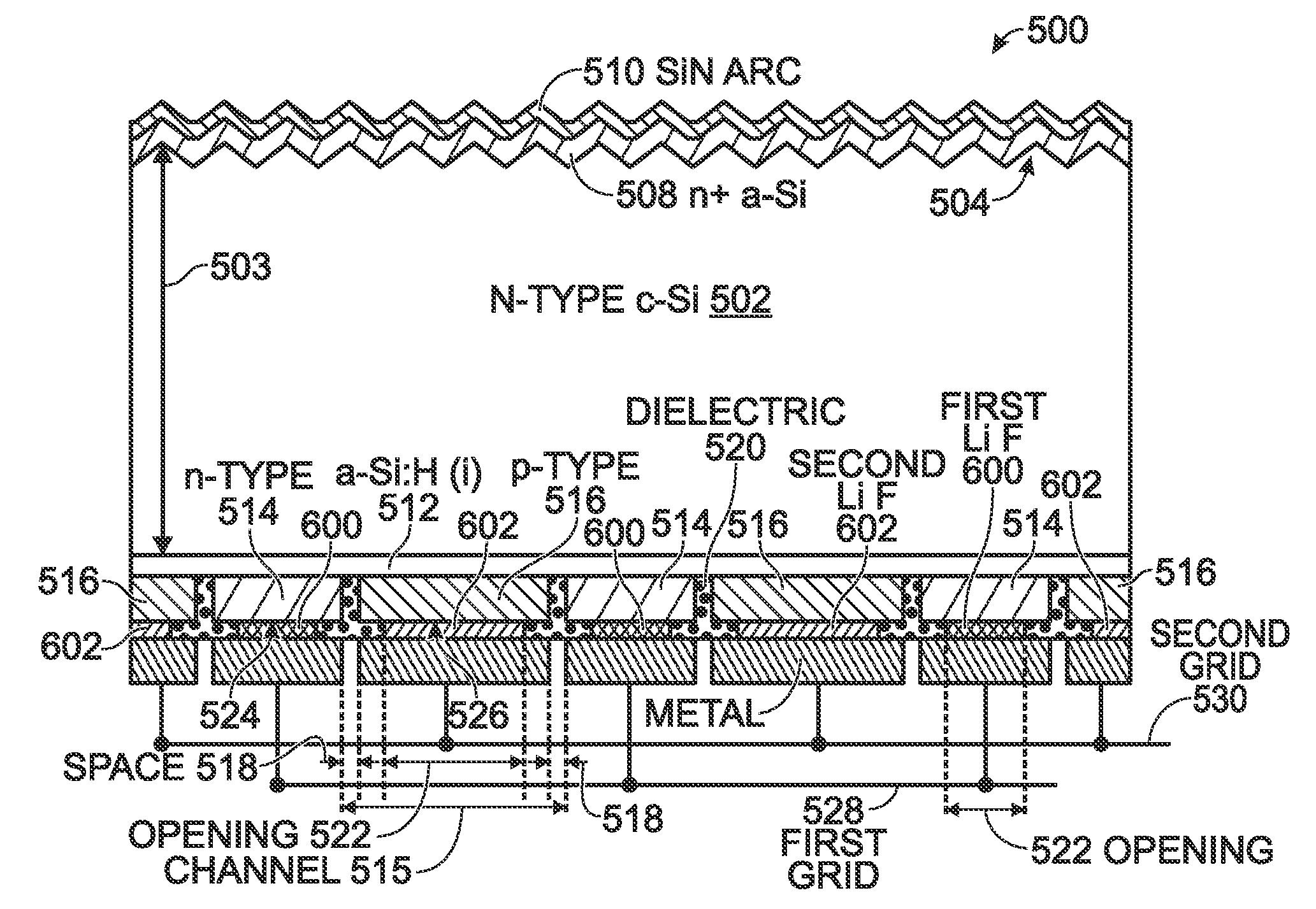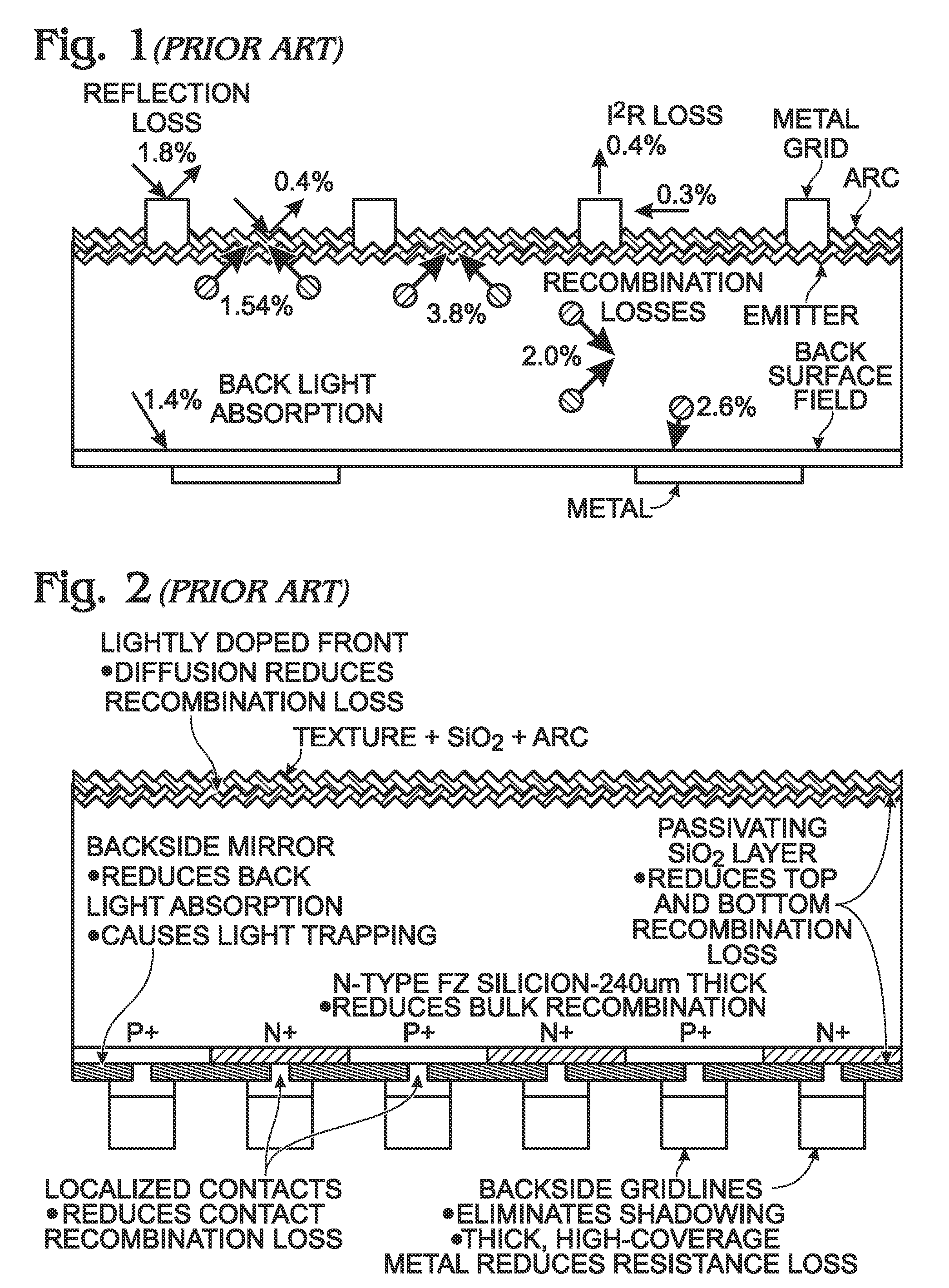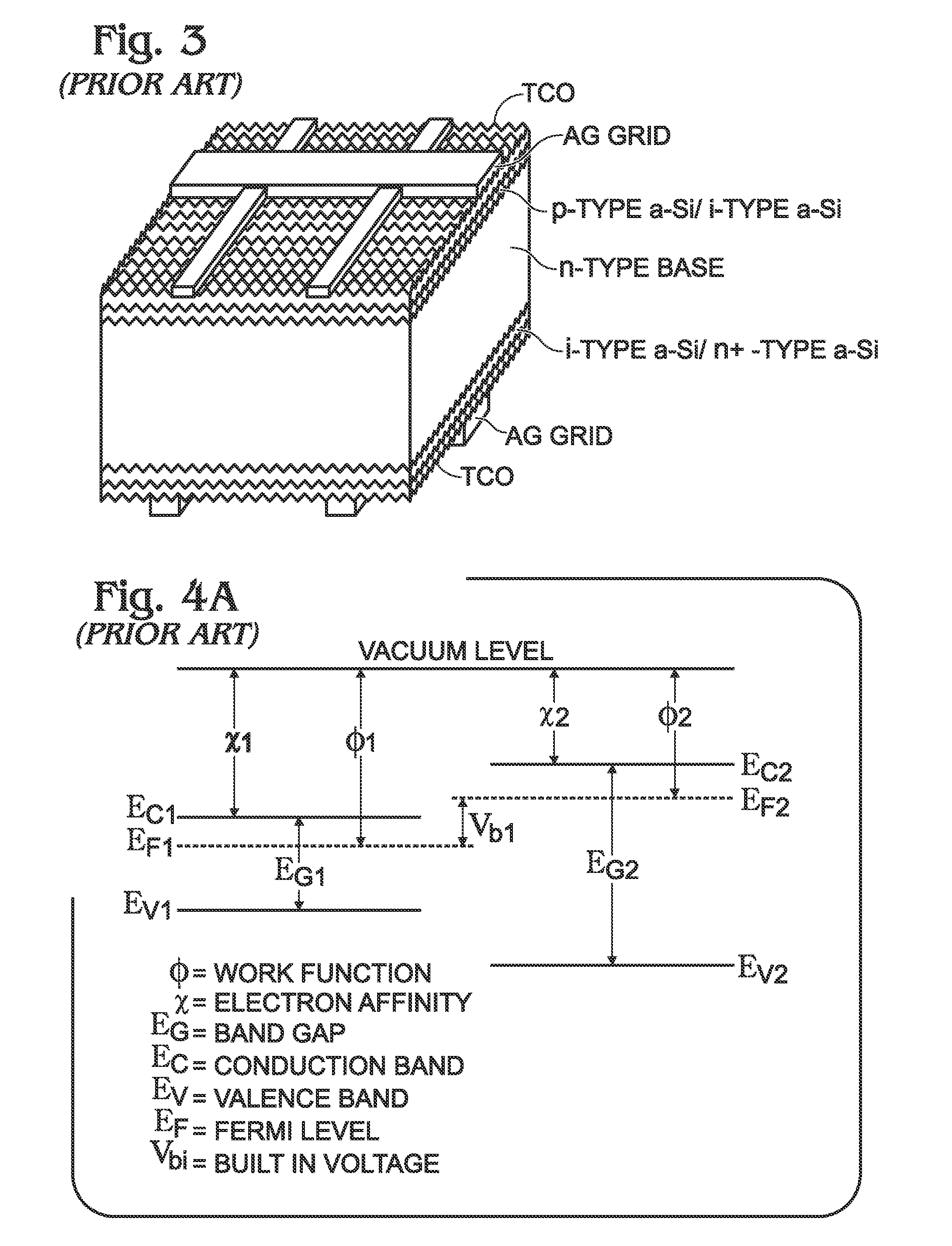Back Contact Solar Cell with Organic Semiconductor Heterojunctions
a solar cell and organic semiconductor technology, applied in the field of solar cell fabrication, can solve the problems of low forward gain and reverse gain, high forward gain and low forward gain, and the limitation of the cell ar, so as to reduce the surface recombination at the a-si/n-type organic semiconductor interface, the interface quality is good, and the surface recombination is reduced
- Summary
- Abstract
- Description
- Claims
- Application Information
AI Technical Summary
Benefits of technology
Problems solved by technology
Method used
Image
Examples
Embodiment Construction
[0040]FIG. 5 is a partial cross-sectional view of an exemplary back contact solar cell with organic semiconductor heterojunctions. The solar cell 500 comprises a substrate 502 made from a first semiconductor of silicon lightly doped with a first dopant type having a first majority carrier and a first energy bandgap. The substrate 502 has a textured topside 504 and a backside 506. The substrate 502 first semiconductor is typically single-crystal silicon or multi-crystalline silicon. As shown in this example, the substrate 502 is n-type single-crystal silicon (c-Si). The substrate first semiconductor 502 has a thickness 503 in a range of 2 to 400 microns, with a first dopant density in a range of 5×1014 to 1×1016 cm−3.
[0041]A second semiconductor layer 508 overlies the first semiconductor substrate textured topside 504, made from hydrogenated amorphous silicon (a-Si:H) and doped with the first dopant. In this example, the first dopant is an n-type material such as arsenic (As) or phos...
PUM
| Property | Measurement | Unit |
|---|---|---|
| Thickness | aaaaa | aaaaa |
| Carrier concentration | aaaaa | aaaaa |
| Carrier concentration | aaaaa | aaaaa |
Abstract
Description
Claims
Application Information
 Login to View More
Login to View More - R&D
- Intellectual Property
- Life Sciences
- Materials
- Tech Scout
- Unparalleled Data Quality
- Higher Quality Content
- 60% Fewer Hallucinations
Browse by: Latest US Patents, China's latest patents, Technical Efficacy Thesaurus, Application Domain, Technology Topic, Popular Technical Reports.
© 2025 PatSnap. All rights reserved.Legal|Privacy policy|Modern Slavery Act Transparency Statement|Sitemap|About US| Contact US: help@patsnap.com



